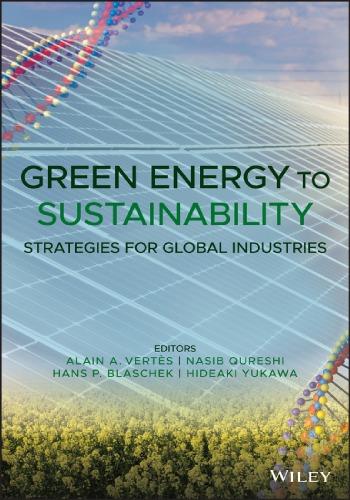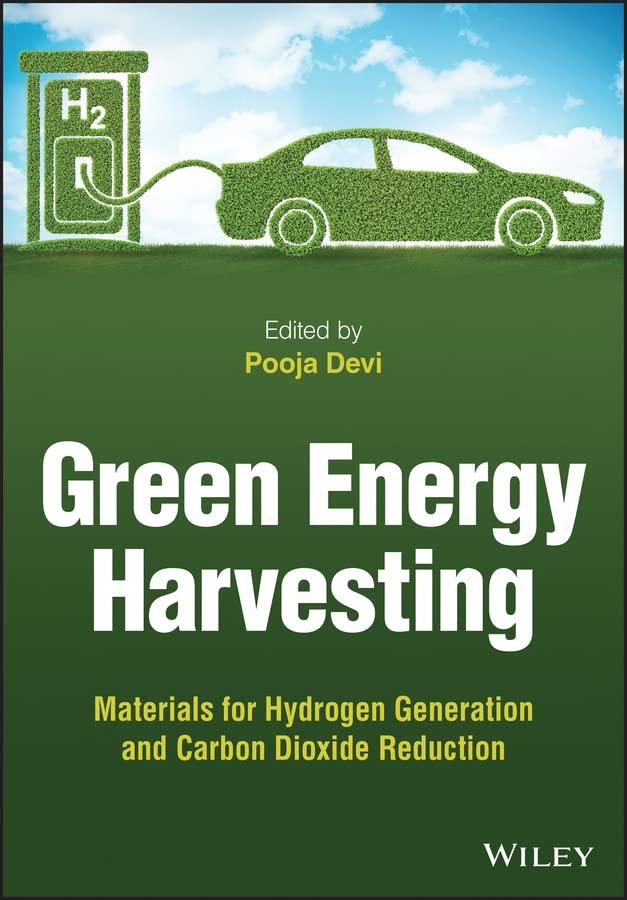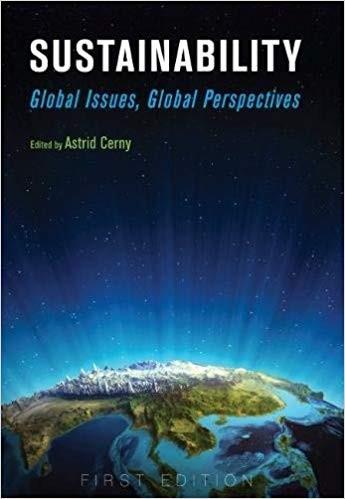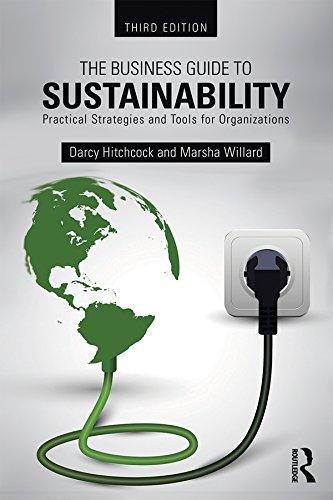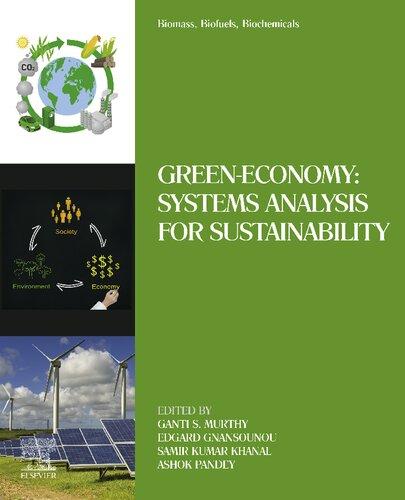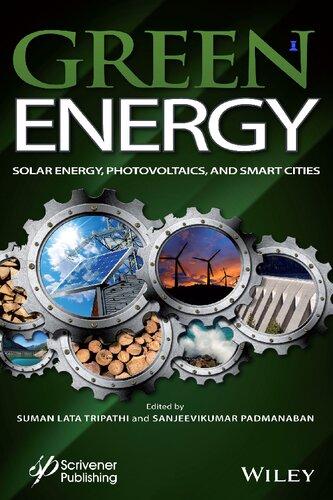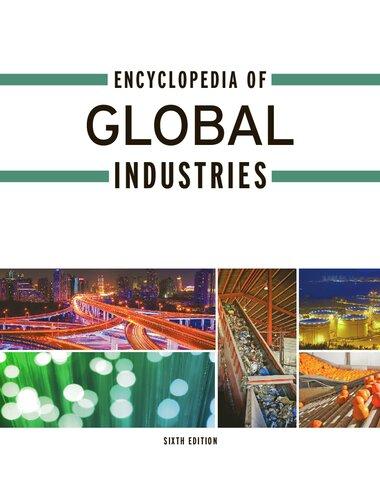GreenEnergytoSustainability
StrategiesforGlobalIndustries
Editedby
AlainA.Vertès SloanFellow,LondonBusinessSchool UK and ManagingDirectorofNxRBiotechnologies,BaselSwitzerland
NasibQureshi
UnitedStatesDepartmentofAgriculture NationalCenterforAgriculturalUtilizationResearch Peoria,USA and UniversityofIllinoisatUrbana-Champaign,USA
HansP.Blaschek
DepartmentofFoodScienceandHumanNutrition UniversityofIllinoisatUrbana-Champaign USA
HideakiYukawa UtilizationofCarbonDioxideInstituteCO.Ltd. Tokyo,Japan
Thiseditionfirstpublished2020 ©2020JohnWiley&SonsLtd
Allrightsreserved.Nopartofthispublicationmaybereproduced,storedinaretrievalsystem,ortransmitted, inanyformorbyanymeans,electronic,mechanical,photocopying,recordingorotherwise,exceptas permittedbylaw.Adviceonhowtoobtainpermissiontoreusematerialfromthistitleisavailableathttp://www .wiley.com/go/permissions.
TherightofAlainA.Vertès,NasibQureshi,HansP.Blaschek,andHideakiYukawatobeidentifiedastheauthorsof theeditorialmaterialinthisworkhasbeenassertedinaccordancewithlaw.
RegisteredOffices
JohnWiley&Sons,Inc.,111RiverStreet,Hoboken,NJ07030,USA
JohnWiley&SonsLtd,TheAtrium,SouthernGate,Chichester,WestSussex,PO198SQ,UK
EditorialOffice
TheAtrium,SouthernGate,Chichester,WestSussex,PO198SQ,UK
Fordetailsofourglobaleditorialoffices,customerservices,andmoreinformationaboutWileyproductsvisitusat www.wiley.com.
Wileyalsopublishesitsbooksinavarietyofelectronicformatsandbyprint-on-demand.Somecontentthatappears instandardprintversionsofthisbookmaynotbeavailableinotherformats.
LimitofLiability/DisclaimerofWarranty
Inviewofongoingresearch,equipmentmodifications,changesingovernmentalregulations,andtheconstantflow ofinformationrelatingtotheuseofexperimentalreagents,equipment,anddevices,thereaderisurgedtoreview andevaluatetheinformationprovidedinthepackageinsertorinstructionsforeachchemical,pieceofequipment, reagent,ordevicefor,amongotherthings,anychangesintheinstructionsorindicationofusageandforadded warningsandprecautions.Whilethepublisherandauthorshaveusedtheirbesteffortsinpreparingthiswork,they makenorepresentationsorwarrantieswithrespecttotheaccuracyorcompletenessofthecontentsofthisworkand specificallydisclaimallwarranties,includingwithoutlimitationanyimpliedwarrantiesofmerchantabilityor fitnessforaparticularpurpose.Nowarrantymaybecreatedorextendedbysalesrepresentatives,writtensales materialsorpromotionalstatementsforthiswork.Thefactthatanorganization,website,orproductisreferredtoin thisworkasacitationand/orpotentialsourceoffurtherinformationdoesnotmeanthatthepublisherandauthors endorsetheinformationorservicestheorganization,website,orproductmayprovideorrecommendationsitmay make.Thisworkissoldwiththeunderstandingthatthepublisherisnotengagedinrenderingprofessionalservices. Theadviceandstrategiescontainedhereinmaynotbesuitableforyoursituation.Youshouldconsultwitha specialistwhereappropriate.Further,readersshouldbeawarethatwebsiteslistedinthisworkmayhavechangedor disappearedbetweenwhenthisworkwaswrittenandwhenitisread.Neitherthepublisher,northeeditorsor authorsshallbeliableforanylossofprofitoranyothercommercialdamages,includingbutnotlimitedtospecial, incidental,consequential,orotherdamages.
LibraryofCongressCataloging-in-PublicationDataappliedfor HBISBN:9781119152026
CoverDesign:Wiley
CoverImages:WMMDNA©3divan/Shutterstock, Powerplanusingrenewablesolarenergy©GenchoPetkov/Shutterstock, OilseedRape©TheDman/GettyImages
Setin9.5/12.5ptSTIXTwoTextbySPiGlobal,Chennai,India
PrintedandboundbyCPIGroup(UK)Ltd,Croydon,CR04YY 10987654321
Wewillmeetthesechallengesbecausewecanandwewillmeetthesechallengesbecausewemust
Contents
AbouttheEditors xxi
ListofContributors xxv
Foreword xxxi
Preface xxxiii
1EconomicGrowthandtheGlobalEnergyDemand 3 JürgenScheffran,MiriamFelkersandRebeccaFroese
1.1HistoricalContextandRelationshipBetweenEnergyandDevelopment 3
1.2ConceptualFrameworkforPathwaysofEnergyUse 6
1.3WorldPopulationTrendsandProspects 7
1.4GrossDomesticProduct(GDP)andEconomicGrowth 8
1.5GlobalEnergyDevelopment 11
1.6GlobalEmissionsofGreenhouseGases 14
1.7LinkagesBetweenKayaFactors 16
1.7.1PerCapitaEnergyandGrowth 16
1.7.2EnergyDemandandEconomicProduction 17
1.7.2.1EnergyasaProductionFactor 18
1.7.2.2EmpiricalResults 19
1.7.3Emission-RelatedFactors 23
1.7.4Energy-RelatedImpacts 25
1.7.5RelativeComparisonoftheKayaFactors 26
1.8DevelopmentofEnergyInvestment 28
1.9ConditionsforEnergyTransitionandDecarbonization 31
1.9.1TargetsandPathwaysofClimatePolicy 31
1.9.2StrategiesofImplementation 33
1.9.3IntegratedAssessmentandDecision-MakinginTransitionProcesses 35
1.10Perspectives 37 Acknowledgments 38 References 38
2TheEnergyMixinJapanPost-Fukushima 45
SeijiNakagame
2.1GreenhouseGas(GHG)EmissionsbyJapan 45
2.2EnergyDependence 46
2.3TheEnergyPolicyofJapan 48
2.4ParisAgreement 49
2.5ProspectiveEnergyDemand 50
2.6ImprovementinEnergyEfficiency 50
2.7ReductionofCO2 EmissioninElectricGeneration 51
2.8DevelopmentofNewTechnologiesforDecreasingGHGEmissions 51
2.9ProductionandUseofBioethanolinJapan 51
2.10ProductionandUseofHydrocarbonsinJapan 52
2.11ProductionandUseofHydrogeninJapan 52
2.12ContributionsoftheJapaneseGovernmenttoFundamentalResearchand Development 52
2.13Perspectives 53 References 53
3GreenEnergyinAfrica,Asia,andSouthAmerica 57
DanieldeCastroAssumpção,MarceloHamaguchi,JoséDilcioRochaand AdrianoP.Mariano
3.1Introduction 57
3.2SouthAmerica 58
3.2.1CurrentStatus 58
3.2.2CommercialDeploymentandChallenges 60
3.2.3PerspectivesonSouthAmerica 61
3.3Africa 62
3.3.1CurrentStatus 62
3.3.2CommercialDeploymentandChallenges 64
3.3.3PerspectivesonAfrica 65
3.4SoutheastAsia 66
3.4.1CurrentStatus 66
3.4.2CommercialDeploymentandChallenges 67
3.4.3PerspectivesonSouthEastAsia 69
3.5China 69
3.5.1CurrentStatus 69
3.5.2CommercialDeploymentandChallenges 71
3.5.3PerspectivesonChina 71
3.6GlobalPerspectives 72 References 72
4TheDevelopmentofSolarEnergyGenerationTechnologiesandGlobal ProductionCapabilities 77
F.JohnHayandN.Ianno
4.1Introduction 77
4.2SunlightandPhotosynthesis 78
4.2.1PhotosyntheticEfficiency 79
4.2.2ActualEfficiencies 79
4.3PhotovoltaicDevices 79
4.4OverviewofSolarPhotovoltaicApplications 82
4.5Perspectives 83 References 84
5RecentTrends,OpportunitiesandChallengesofSustainableAviationFuel 85 LibingZhang,TerriL.ButlerandBinYang
5.1Introduction 85
5.2OverviewoftheJetFuelMarket 86
5.2.1DrivingForceofGrowingBiojetFuelOpportunities 86
5.2.2BiojetFuelTypesandSpecifications 88
5.3AssessmentofEnvironmentalPolicyandEconomicFactorsAffectingtheAviation Industry 93
5.3.1MomentumBuildingofInternationalCarbonEmissionRegulations 94
5.3.2IncreasingActivitiestoAddresstheCarbonEmissionControl 95
5.3.3NewTechnologiesandAviationOperationImprovement 97
5.4CurrentActivitiesAroundBiojetintheAviationIndustry 98
5.4.1AlternativeJetFuelDeploymentandUse 98
5.4.2TestFlightsofCommercialAirlines 100
5.5ChallengesofFutureBiojetFuelDevelopment 100
5.6Perspectives 104 Acknowledgments 105 References 105
6TheEnvironmentalImpactofPollutionPreventionandOtherSustainable DevelopmentStrategiesImplementedbytheAutomotiveManufacturing Industry 111
SandraD.Gaona,CherylKeenan,CyrilVallet,LawrenceReichleandStephenC.DeVito
6.1Introduction 111
6.2OverviewoftheAutomotiveManufacturingIndustry 112
6.2.1History 112
6.2.2ProductionandEconomicTrends 112
6.2.3KeyPlayers 113
6.3ChemicalsandChemicalWasteinAutomotiveManufacturing 114
6.3.1EmissionsfromFuelCombustion 114
6.3.1.1AutomobileManufacturingGHGEmissions 114
6.3.1.2AutomobileOperationGHGEmissions 114
6.3.2TRI-ReportedChemicalWasteManagement 115
6.3.2.1USEPAToxicsReleaseInventory 116
6.3.2.2TrendsinTRI-ReportedChemicalWasteManagement 117
6.3.2.3WasteManagementMethods 119
6.3.2.4TrendsinReleases 119
6.3.2.5AutomotiveManufacturingvs.AllOtherManufacturingSectors 120
6.4PollutionPreventioninAutomotiveManufacturing 121
6.4.1SustainabilityTrendsinAutomotiveManufacturing 121
6.4.1.1CorporateSustainabilityReports 122
x Contents
6.4.1.2Eco-Efficiency 122
6.4.1.3ProcessandTechnologyModifications 123
6.4.1.4Safer,EnvironmentallyFriendlyAlternativeMaterials 124
6.4.1.5RecyclingofMetalsandSolvents 125
6.4.1.6MetalScrapandWaste 125
6.4.1.7FluidsandSolvents 125
6.4.1.8End-of-LifeVehicles(ELVs) 126
6.4.1.9FuelEconomy 126
6.4.2PollutionPreventionActivitiesReportedtoTRI 126
6.4.2.1ExamplesofSourceReductionActivitiesReportedtoTRI 129
6.4.2.2TRIPollutionPreventionAnalysis–EffectivenessofSourceReductionActivities 129
6.4.2.3BarrierstoSourceReduction 129
6.5Perspectives 131
6.5.1Summary 131
6.5.2PotentialPollutionPreventionOpportunities 133 Disclaimer 134 References 134
7TheGlobalDemandforBiofuelsandBiotechnology-DerivedCommodity Chemicals:Technologies,Markets,andChallenges 137 StephenR.HughesandMarjorieA.Jones
7.1Introduction 137
7.2OverviewofGlobalEnergyDemand 137
7.3PetroleumDemandandPetroleumProductsforPotentialReplacementby Bioproducts 140
7.4RoleofBiofuelsandBiobasedChemicalsinRenewableEnergyDemand 143
7.5AchievingPetroleumReplacementwithBiobasedFuelsandChemicals 145
7.6ProjectionsofGlobalDemandforBiobasedFuelsandChemicals 149
7.7PotentialImpactsonPriceofTransportationFuelsandChemicalsAssumingVarious ScenariosofWorldEconomicGrowth 151
7.8ProjectionofEnergy-RelatedCO2 EmissionsWithorWithoutRemediation Technology 151
7.9GovernmentImpactonDemandforBiofuelsandBiobasedChemicals 152
7.10Perspectives 154 References 155
PartIIChemicalsandTransportationFuelsfromBiomass 157
8SustainablePlatformChemicalsfromBiomass 159 AnkitaJunejaandVijaySingh
8.1Introduction 159
8.22-Carbon 161
8.2.1GlycolicAcid 161
8.33-Carbon 163
8.3.1PropionicAcid 163
8.3.2PyruvicAcid 163
8.3.3LacticAcid 166
8.44-Carbon 166
8.4.1ButyricAcid 166
8.4.2SuccinicAcid 167
8.4.3MalicAcid 168
8.4.4Putrescine 168
8.55-Carbon 169
8.5.1ItaconicAcid 169
8.5.2Xylitol 170
8.5.3GlutaconicAcidandGlutaricAcid 171
8.66-Carbon 171
8.6.1AdipicAcid 171
8.6.2MuconicAcid 172
8.6.3CitricAcid 173
8.6.4GlucaricAcid 173
8.7Perspectives 174
References 175
9BiofuelsfromMicroalgaeandSeaweeds:PotentialsofIndustrialScale Production 185 LichengPeng,FreemanLanandChristopherQ.Lan
9.1Introduction 185
9.2Biofuels 186
9.2.1TypesofBiofuels 187
9.2.1.1Biodiesel 187
9.2.1.2Bioethanol 187
9.2.1.3Bio-oilsandBio-syngas 188
9.2.1.4Bio-hydrogen 188
9.2.2FeedstockofBiofuelProductionBasedonPlants 188
9.2.2.1TerrestrialPlants 190
9.2.2.2AquaticPlants–Algae 190
9.3BiofuelsfromMicroalgaeandSeaweeds 191
9.3.1BiofuelsfromMicroalgae 192
9.3.2BiofuelsfromMacroalgae(i.e.Seaweeds) 192
9.3.3AdvantagesofAlgaeastheFeedstockofBiofuels 193
9.4RecentDevelopmentsinAlgaeProcessingTechnologies 195
9.4.1HarvestingandDewatering 195
9.4.2ExtractionApproaches 196
9.4.3ConversiontoBiofuels 198
9.5PotentialforIndustrialScaleProduction 200
9.5.1RoleofBiofuelsinEnergySupplyandEnvironmentalProtection 200
9.5.2BiofuelDemandandSupportingPolicies 201
9.5.3RoutestoCost-EffectiveAlga-BasedBiofuels 202
9.5.3.1OptimizationofCultivationProcesses 202
9.5.3.2AchieveHighBiomassConcentrationofAlgae 204
9.5.3.3Co-producingValue-AddedProductstoOffsetOverallCosts 204
9.5.3.4CombiningAlga-BasedBiofuelProductionwithEnvironmentProtection 204
9.6ProgressesintheCommercialProductionofAlga-BasedBiofuels 205
9.7Perspectives 209
References 210
10AdvancedFermentationTechnologies:ConversionofBiomasstoEthanolby OrganismsOtherthanYeasts,aCasefor Escherichiacoli 219 K.T.Shanmugam,LorraineP.Yomano,SeanW.YorkandLonnieO.Ingram
10.1Introduction 219
10.2 Zymomonasmobilis222
10.3 Escherichiacoli223
10.4OsmoticStressofHighSugarConcentration 227
10.5Inhibitor-TolerantEthanologenic E.coli227
10.6EngineeringBacterialBiocatalystsOtherthan E.coli fortheProductionofEthanol UsingthePDC/ADHPathway 229
10.7EthanolProductionbyNon-PDCPathways 230
10.8PartitionofCarbonatthePyruvateNode 231
10.9OtherMetabolicPathwaysthatContributetoEthanolProduction 231
10.10Perspectives 232
Acknowledgements 232
References 233
11ClostridiaandProcessEngineeringforEnergyGeneration 239 AdrianoP.Mariano,DaniloS.Braz,HenriqueC.A.VenturelliandNasibQureshi
11.1Introduction 239
11.2RecentTechnologicalAdvances 241
11.2.1Micro-organisms 241
11.2.2NovelSubstrates 243
11.2.3BiomassPretreatment 244
11.2.4NovelProductRecoveryTechniques 245
11.2.5Bioreactors 245
11.2.6CombiningUnitOperationsandUseofBy-products 245
11.3EconomicModellingandCaseStudy 246
11.3.1Techno-economicStudies 246
11.3.2CaseStudy:ProductionofButanolfromEucalyptus 251
11.3.2.1PulpMillCaseStudy 251
11.3.2.2ABEPlant 251
11.3.2.3ApproachandAssumptionsfortheEconomicAnalysis 255
11.3.2.4InvestmentCostandEnergyEfficiencyoftheABEPlant 256
11.3.2.5MinimumButanolSellingPrice 259
11.3.2.6ValueCreationtoPulpMills 262
11.4Perspectives 263
Acknowledgements 263 References 264
12FuelEthanolProductionfromLignocellulosicMaterialsUsingRecombinant Yeasts 269 StephenR.HughesandMarjorieA.Jones
12.1ReviewofCurrentFuelEthanolProduction 269
12.1.1TechnologicalAspects 269
12.1.2CommercializationofCellulosicEthanol 271
12.2EvolutionofCostofCellulosicEthanolProduction 272
12.2.1AnalysisComparingCostsofProducingEthanolfromCornStarchandLignocellulosic Feedstocks 272
12.2.2CostAnalysisbyTaoetal.forCellulosicEthanol 274
12.3TechnologicalOpportunitiestoReduceCellulosicEthanolProductionCosts 277
12.4Perspectives:ApproachestoOptimizetheUseofLignocellulosicandWasteMaterialsas Feedstocks 279 References 281
13EnzymesforCellulosicBiomassHydrolysisandSaccharification 283 ElmarM.Villota,ZiyuDai,YanpinLuandBinYang
13.1Introduction 283
13.2GlycosylHydrolases:GeneralStructureandMechanism 286
13.2.1ClassificationofGH 287
13.3TheCellulaseEnzymeSystem 289
13.3.1Endoglucanases 290
13.3.2Cellobiohydrolases 290
13.3.3Beta-Glucosidases 291
13.3.4PolysaccharideMonooxygenasesandCellobioseDehydrogenases 292
13.3.5CellulasesSynergyandKinetics 293
13.4TheHemicellulaseEnzymeSystem 295
13.4.1Endo-XylanasesandBeta-Xylosidases 296
13.4.2Endo-MannanasesandBeta-Mannosidase 297
13.4.3OtherHemicellulasesandAccessoryEnzymes 297
13.4.4HemicellulasesandCompleteHydrolysis 298
13.5MicroorganismsforBiomassHydrolysis 299
13.5.1DiversityofCellulolyticMicroorganismsandLifestyles 299
13.5.2FungiandTheirArsenalforBiomassHydrolysis 300
13.5.3BacteriaandTheirCellulolyticMachinery 302
13.5.3.1The C.thermocellum Cellulosome 303
13.5.3.2Enzyme-MicrobeSynergy 305
13.5.3.3MechanismsofCellAdhesion 307
13.6Perspectives 308 Acknowledgement 309 References 309
14LifeCycleAssessmentofBiofuelsandGreenCommodityChemicals 327 MairiJ.Black,OnesmusMwabonje,AiduanLiBorrionandAureliaKarinaHillary
14.1Introduction 327
14.2LifeCycleAssessment(LCA) 328
14.3TheOriginandPrinciplesofLifeCycleAssessment 329
14.4DevelopingaLifeCycleAssessment 329
14.5ScopeoftheLifeCycleAssessment:AttributionalversesConsequential 331
14.6BiofuelsandGreenCommodityChemicals 332
14.7FeedstocksforBiofuels 332
14.7.1FirstGenerationBiofuels 333
14.7.2SecondGenerationBiofuelFeedstock 333
14.8ConversionofFeedstock 333
14.8.1BiochemicalProcesses 334
14.8.2ThermochemicalProcesses 334
14.9SupplyChainandLogistics 335
14.10UsingLCAasaTooltoAssessGHGEmissionsandOtherImpactsAssociatedwith BioethanolProductionandSupply 335
14.11DiscussionontheSuitabilityofLCA 336
14.12Perspectives:MovingForwardwiththeLCAConcept 348 References 349
PartIIIHydrogenandMethane 355
15BiotechnologicalProductionofFuelHydrogenandItsMarket Deployment 357
CarolinaZampolLazaro,EmrahSagirandPatrickC.Hallenbeck
15.1Introduction 357
15.2HydrogenProductionThroughDarkFermentation 358
15.2.1MicroorganismsInvolvedinDarkFermentativeHydrogenProduction 358
15.2.1.1HydrogenProductionbyPureCultures 358
15.2.1.2MixedCulturesandInoculumPre-treatments 358
15.2.1.3Co-culturesUsedforHydrogenProduction 359
15.2.2OperationalFactorsInfluencingHydrogenProduction 360
15.2.3BioreactorsUsedforDarkFermentativeHydrogenProduction 362
15.2.4SubstratesUsedforDarkFermentativeHydrogenProduction 366
15.3HydrogenProductionThroughPhotofermentation 370
15.3.1Photo-biologicalHydrogenProductionbyPurpleNon-sulfurBacteria 370
15.4HydrogenProductionbyCombinedSystems 370
15.4.1HydrogenProductionbyDarkandPhotofermentationinCo-culture 370
15.4.2Two-StageDarkandPhoto-fermentativeHydrogenProduction 373
15.4.3HydrogenProductionbyMultipleStages(Cellulolytic,DarkFermentative,and PhototrophicBacteria) 377
15.4.4HydrogenProductionbyCombinedDarkFermentationandMicrobialElectrolysis 379
15.5Perspectives 379
15.5.1HydrogenProductionPotentialandMarketBarriers 380
15.5.2HydrogenGenerationMarket 381
15.5.3MicrobialHydrogenProduction:TargetsandFutureProspects 382 Acknowledgements 383 References 383
16DeploymentofBiogasProductionTechnologiesinEmergingCountries 395 GuangyinZhen,XueqinLu,XiaohuiWang,ShaojuanZheng,JianhuiWang,ZhongxiangZhi, LianghuSu,KaiqinXu,TakuroKobayashi,GopalakrishnanKumarandYoucaiZhao
16.1Introduction 395
16.2TypesofFeedstock 397
16.2.1WasteActivatedSludge 397
16.2.2LignocellulosicBiomass 398
16.2.3Algae 401
16.2.4FoodWaste 402
16.2.5LeafyVegetables 403
16.2.6LivestockManure(Chicken,PigandSwineManure) 403
16.3PretreatmentTechnologiesofAnaerobicDigestionFeedstocks 404
16.3.1AcidicPretreatment 404
16.3.2AlkaliPretreatment 405
16.3.3Ultrasonication 409
16.3.4MicrowaveIrradiation 410
16.3.5Ozonation 411
16.3.6ThermalPre-treatmentTechnique 412
16.3.7EnzymaticPre-treatment 412
16.3.8High-pressureHomogenization 413
16.4Full-scaleImplementationStatusofAnaerobicDigestioninDevelopingCountries 413
16.4.1China 413
16.4.2India 414
16.4.3Malaysia 414
16.4.4Vietnam 415
16.4.5Thailand 415
16.5Perspectives 416 References 416
17HydrogenProductionbyAlgae 425 TuncCatalandHalilKavakli
17.1ImportanceofHydrogenProduction 425
17.2HydrogenProducingMicroorganisms 427
17.3HydrogenProducingAlgae(Macro–Micro)Species 428
17.4ProductionofBiohydrogenThroughFermentation 431
17.4.1BiohydrogenProduction 431
17.4.2FermentationSystemforHydrogenProduction 432
17.5Technologies(SolarAlgaeFuelCell/MicrobialFuelCell) 433
17.6PossibilityofCommercialProductionofHydrogen 434
17.7PerspectivesandFutureImplicationsofAlgaeinBiotechnology 437 References 438
18ProductionandUtilizationofMethaneBiogasasRenewableFuel 447
GaneshDattatrayaSaratale,JeyaprakshDamaraja,SuthaShobana,RijutaGaneshSaratale, SivagurunathanPeriyasamy,GunagyinZhenandGopalakrishnanKumar
18.1Introduction 447
18.2AnaerobicDigestion 448
18.3MechanismofAnaerobicDigestion 449
18.3.1TheoreticalMethaneBiogasProduction 452
18.4SignificantFactorsInfluencingAnaerobicDigestion 455
18.4.1EffectofTemperature 455
18.4.2EffectofpH 455
18.4.3HydraulicRetentionTime(HRT)andSubstrateLoadingRate 456
18.4.4MicroalgaeCellWallCompositionandDegradability 456
18.5StrategiesAppliedtoEnhanceMicroalgaeMethaneBiogasProduction 456
18.5.1DifferentPretreatmentTechniques 457
18.5.2Co-DigestionProcess 457
18.6UtilizationofMethaneBiogasasaRenewableFuel 458
18.7Perspectives 459 References 459
PartIVPerspectives 465
19IntegratedBiorefineriesfortheProductionofBioethanol,Biodiesel,andOther CommodityChemicals 467
PedroFSouzaFilhoandMohammadJTaherzadeh
19.1Introduction 467
19.2TypesofBiorefineries 468
19.2.1Flexibility 468
19.2.1.1LignocellulosicFeedstock(LCF)Biorefinery 469
19.2.1.2WholeCropBiorefinery 469
19.2.1.3GreenBiorefinery 470
19.2.2Feedstock 470
19.3BiorefineryPlatforms 471
19.4IntegratedBiorefineries 472
19.5Coproducts 475
19.5.1FourCarbon1,4-Diacids 475
19.5.22,5-FurandicarboxylicAcid(FDA)and5-Hydroximethilfurfural(HMF) 476
19.5.33-HydroxypropionicAcid(3-HP) 477
19.5.4AsparticAcid 477
19.5.5GlucaricAcid 477
19.5.6GlutamicAcid 478
19.5.7ItaconicAcid 478
19.5.8LevulinicAcid 478
19.5.93-Hydroxybutyrolactone(HBL) 478
19.5.10Glycerol 479
19.5.11Sorbitol 479
19.5.12Xylitol 479
19.5.13LacticAcid 479
19.5.14Biohydrocarbons 479
19.5.15Lignin 480
19.6IntegratingEthanolandBiodieselRefineries 480
19.7EconomicalAspects 482
19.8Perspectives 484 References 484
20LignocellulosicCropsasSustainableRawMaterialsforBioenergy 489 EmilianoMalettaandCarlosHernándezDíaz-Ambrona
20.1Introduction 489
20.2MajorLignocellulosicIndustrialCrops 492
20.2.1AnnualCrops 493
20.2.1.1CellulosicAnnualGrasses 493
20.2.1.2FibreandOilCrops 493
20.2.2Perennials 494
20.2.2.1HerbaceousBiomassCrops 494
20.2.2.2WoodyCrops 497
20.3Social,EconomicandEnvironmentalAspectsinSustainabilityCriteria 498
20.3.1AnnualversusPerennialOptions 499
20.3.2SoilIssues 500
20.3.3BiodiversityIssues 501
20.4ProcessingAlternativesforLignocellulosicBioenergyCrops 502
20.5FillingtheGap:FromFarmtoIndustry 503
20.6Perspectives 506
References 508
21IndustrialWasteValorization:ApplicationstotheCaseofLiquidBiofuels 515 HaiboHuangandQingJin
21.1Introduction 515
21.2TypesofIndustrialWasteforBiofuelProduction 516
21.3EthanolProduction 517
21.3.1EthanolandItsMarket 517
21.3.2EthanolfromFoodWaste 518
21.3.3Pretreatment 518
21.3.4EnzymaticHydrolysis 519
21.3.5Fermentation 520
21.3.6EthanolProductionfromOtherIndustrialWastes 522
21.4Butanol 523
21.4.1ButanolandItsMarket 523
21.4.2ButanolProductionfromFoodWaste 524
21.4.3ButanolProductionfromOtherIndustrialWastes 526
21.4.4EconomicAnalysisofButanolProduction 526
21.5Biodiesel 527
21.5.1BiodieselandItsMarket 527
21.5.2FeedstocksforBiodieselProduction 528
21.5.3BiodieselProductionfromWasteCookingOilwithAlkaliCatalysts 529
21.5.4BiodieselProductionfromWasteCookingOilwithAcidCatalysts 529
21.5.5BiodieselProductionfromWasteCookingOilwithAcidandAlkaliCatalysts 530
21.6Perspectives 531 References 531
22TheEnvironmentalImpactofPollutionPrevention,SustainableEnergy Generation,andOtherSustainableDevelopmentStrategiesImplementedby theFoodManufacturingSector 539
SandraD.Gaona,T.J.Pepping,CherylKeenanandStephenC.DeVito
22.1Introduction 539
22.2OverviewoftheFoodManufacturingIndustry 540
22.2.1ProductionandEconomicTrends 542
22.2.2KeyPlayers 545
22.3ChemicalsandChemicalWastesintheFoodManufacturingIndustry 545
22.3.1GreenhouseGasEmissions 546
22.3.2ConventionalWaterPollutants 546
22.3.3Refrigerants 547
22.3.4TRI-ReportedChemicalWasteManagement 548
22.3.5TrendsinTRI-ReportedChemicalWasteManagement 548
22.3.5.1TrendsinReleases 552
22.3.5.2SummaryofTRIReporting 554
22.4PollutionPreventioninFoodManufacturing 554
22.4.1SustainabilityTrendsinFoodManufacturing 554
22.4.1.1CorporateSustainabilityReports 555
22.4.1.2Eco-Efficiency 556
22.4.2ProcessandTechnologyModifications 556
22.4.2.1EnergyEfficiency 556
22.4.2.2ChemicalSubstitutes 557
22.4.3Recycling 558
22.4.3.1Packaging 558
22.4.3.2FoodWaste 558
22.4.3.3EnergyRecovery 559
22.4.4WastewaterTreatment 559
22.4.5PollutionPreventionActivitiesReportedtoTRI 560
22.4.5.1ExamplesofSourceReductionActivitiesReportedtoEPA’sTRIProgram 561
22.4.5.2TRIPollutionPreventionAnalysis–EffectivenessofSourceReductionActivities 561
22.4.5.3BarrierstoSourceReduction 562
22.4.5.4SummaryofPollutionPreventionActivitiesReportedtoTRI 562
22.5Perspectives 563
22.5.1NextSteps 564
Disclaimer 564 References 564
23FinancingStrategiesforSustainableBioenergyandtheCommodityChemicals Industry 569 PraveenV.Vadlani
23.1TheCurrentFinancingScenarioatGlobalLevel 569
23.1.1Recoveryfrom2008FinancialCrisisandGlobalEconomicTrends 569
23.1.2FinancialConditionsatGlobalLevel 570
23.2EthanolBiofuelIndustry–AnOverview 572
23.2.1EthanolIndustryMarketandGrowthPerspective 572
23.2.2RenewableEthanolIndustryfromGrainandCellulosicFeedstocks 572
23.2.3EthanolBiofuelsIndustry–Co-products 575
23.2.4EthanolBiofuelsIndustry–CostandEconomicFactors 576
23.3Bio-BasedIndustry–CurrentStatusandFuturePotential 577
23.3.1EmergenceofBio-BasedIndustry 577
23.3.2Bio-BasedIndustry–PolicyLandscapeandCompetitiveness 578
23.4FinancingandInvestmentStrategyforBio-BasedIndustries 579
23.4.1FinancingChallengesforFirmsintheNewBioeconomy 579
23.4.2TheFinancingofVariousStepsintheBio-BasedProcesses 581
23.5PerspectivesandSustainableFinancingApproach–ChangeinWallStreetMindsetin theValuationofBio-BasedIndustries 583
Acknowledgements 584
References 585
24CorporateSocialResponsibilityandCorporateSustainabilityasForcesof Change 587
AsutoshT.Yagnik
24.1Introduction 587
24.2CorporateSocialResponsibility(CSR) 587
24.2.1WhatIsCSR? 587
24.2.2ConceptualModelsofCSR 589
24.2.3TheHistoryandEvolvingNatureofCSR 589
24.2.3.1TheFourErasofEarlyCSR 589
24.2.3.2TheImpactofEnvironmentalDisastersandGlobalizationinthe1980sto2000s 592
24.2.3.3Fromthe2000stoToday:TheFurtherEvolutionofCSRanditsRelationshiptoBrand Management 593
24.3FromCSRtoCorporateSustainability 597
24.3.1WhatIsSustainabilityandhowDidthePhraseComeabout? 597
24.3.2ConceptualModelsandFrameworksforCorporateSustainability 598
24.3.3CSRandCorporateSustainabilityAreNottheSameThing 598
24.3.4CorporateSustainability–TheFutureofCSR 600
24.4Perspectives 603
24.4.1ParadigmShiftinCorporateSustainabilityThinking 604
24.4.2ThreeKeyCapabilitiesNeededtoSupportCorporateSustainability 605 References 607
25TheIndustrialWorldintheTwenty-FirstCentury 613 AlainA.Vertès
25.1Introduction:EnergyandSustainability 613
25.2TransportationintheTwenty-FirstCentury:ACarbonTaxStory 622
25.3CitiesofChange 627
25.4TheChemicalIndustryRevisited 629
25.5ParadigmChangesinModesofConsumption 633
xx Contents
25.6InternationalActionforCurbingthePollutionoftheAtmosphereCommons: TheCaseofCFCsandtheOzoneLayer 634
25.7SocialActivismasanEngineofChange:RequiemforaWonderfulWorld 635
25.8Perspectives:ABraveNewWorld 636
References 639
Index 649
AbouttheEditors
Dr.AlainA.Vertès isManagingDirectoratNxRBiotechnologies, aboutiqueglobalconsultingfirmbasedinBasel,Switzerland, whereheadvisesclientsonstrategy,businessdevelopment, in/out-licensing,entrepreneurshipandinvestment.Hebringsto hisroleextensiveexperienceinthepharmaceuticalandindustrial biotechnologysectors,inEurope,NorthAmericaandAsiaandin differentfunctionsincludingresearch,manufacturing,contract research,andstrategicalliances.Dr.VertèsreceivedhisM.Sc.degree fromtheUniversityofIllinoisatUrbana-Champaign,hisPh.D.from theUniversityofLilleFlandresArtoiswhileconductingresearch attheInstitutPasteurinParis,hehascompletedhispost-doctoral trainingatMitsubishiPetrochemicalCompanyinJapan,andisaSloanFellowfromLondon BusinessSchool(MBA/M.Sc.).DrVertèsisaleadeditorofseveralscienceandstrategybooksin thefieldsofregenerativemedicineandsustainablechemistry.

Dr.NasibQureshi isafellowinAmericanInstituteofChemicalEngineering(AIChE),theSocietyforIndustrialMicrobiology& Biotechnology(SIMB),andAmericanInstituteofChemists(AIC). HeisaChemical/BiochemicalEngineerbytrainingwithdualPhD degrees[oneinBiochemical/BiologicalEngineering(University ofNebraska,Lincoln,NE,UnitedStates)andtheotherinFermentationTechnology(InstituteofChemicalTechnology,Bombay, India)].HehasalongassociationwiththeUniversityofIllinois atUrbanaChampaign(Illinois,USA,since1987)andpresently holdsanAdjunctProfessor’sappointment.Currently,heisworkingfortheUnitedStatesDepartmentofAgriculture(Agricultural ResearchService)asaResearchChemicalEngineer.Hisresearchfocusesondevelopingnovel bioprocesstechnologiesforbiofuelsproduction.Hehasover300authoritativepapers,chapters, reviewarticles,patents,andconferencepresentations.HewasPresidentofAmericanInstitute ofChemicalEngineers(AIChE),CentralIllinoisSection,2008&2009,andAmericanChemical Society(ACS),IllinoisHeartlandSection,2008.HewasalsoanAdvisoryBoardMemberforthe SocietyforBiologicalEngineering(SBE,USA).Dr.Qureshiis“EditorinChief”fortheWorld J.Microbiology&Biotechnology.Hehaseditedseveralbooksonbiofuelsandbiorefineriesand
stemcellsinregenerativemedicine(JohnWiley&Elsevier).Dr.Qureshihasreceivedmany awardsincludingfromtheWorldJ.Microbiology&Biotechnology,AmericanChemicalSociety, UnitedStatesDepartmentofAgriculture,andUniversityofNebraska(Lincoln,NE,USA).His expertiseinbioprocess/biochemicalengineeringandbiofuelsarenaiswidelyandinternationally sought.

Dr.HansP.Blaschek isProfessorEmeritusattheUniversity ofIllinoisatUrbana-Champaign(UIUC).HeservedasAssistant DeanintheCollegeofAgriculturalConsumerandEnvironmental Sciences(ACES),DirectoroftheCenterforAdvancedBioenergy Research(CABER)andtheIntegratedBioprocessingResearchLaboratory(IBRL)attheUniversityofIllinois.TheIBRLisa$32M intermediatelevelpilotfacilitydesignedforthescaleupofbench levelprocessesandunitoperations,withaparticularfocusonscalingbiofuelsandbioproductstechnologiesforcommercialization. ThemissionofIBRListofacilitatebioenergy-relatedactivitiesasit relatestoresearch,teachingandoutreach.CABERandIBRLinstitutedasuccessfulprofessionalscienceMSdegreeprogramfocusedonnumerousdisciplinaryareas includingbiofuelsandbioprocessing.Dr.BlaschekservedasthemeleaderoftheMolecularBioengineeringofBiomassConversionThemeoftheInstituteforGenomicBiologyatUIUCand wasinterimDepartmentHeadoftheDepartmentofFoodScienceandHumanNutrition.Hewas theCo-FounderandCSOofTetraVitaeBiosciences(TVB)focusedoncommercializationofthe acetone-butanolfermentationbuildingontechnologiesdevelopedinhislaboratoryattheUniversityofIllinois.Dr.Blaschek'sresearchinterestsinvolvethegeneticmanipulationofmicroorganismsforbiotechnologicalapplications,examinationofbiomassassubstratesforfermentationto value-addedproducts,developmentofanintegratedfermentationsystemforbioproductsproductionandrecovery.

Dr.HideakiYukawa isFounderandCEOatUtilizationofCarbon DioxideInstitute(UCDI),anR&D-focusedventurecompanyoutofthe UniversityofTokyo.Specializinginmolecularbiology,microbialapplicationsandenzymechemistry,Dr.Yukawaearnedhisdoctoratefrom theUniversityofTokyoandclimbedtheranksatMitsubishiChemical CorporationtothelevelofResearchFellow.HeoversawtheestablishmentoftheMicrobiologyResearchGroupattheResearchInstituteof InnovativeTechnologyfortheEarth(RITE),outofwhichhefounded theGreenEarthInstitute(GEI)Companytostamptheroleofrenewablesinindustry.HiscurrentresponsibilitiesatUCDIareanchored uponthepursuitofalow-carbonfuturesocietyandadvancementof biotechnology-basedsolutionstoglobalfoodsecurityissues.Dr.Yukawa’scontributionshavebeen recognizedthroughawardssuchastheJapanBioindustryAwardforabioprocessforproductionofbiochemicalsusingnonlyticbacterialcells,theTsukubaFoundationforChemicaland BiotechnologyAwardforestablishmentofrecombinantDNAtechnologyforcoryneformbacteriaanddevelopmentofbioprocessesthereof,theJapanSocietyforBioscience,Biotechnology andAgrochemistry(JSBBA)Awardforachievementsintechnologicalresearch,andtheGrand
PrizeattheNikkeiGlobalEnvironmentalAwardsforbioethanolproductionfrommixedsugars bygeneticallyengineered Corynebacteriumglutamicum.ThefirstJapanesenationaltoreceivea FellowshipAward(forachievementsinthefieldofappliedmicroorganisms)fromTheSociety ofIndustrialMicrobiologyandBiotechnology(SIMB),Dr.Yukawahasauthoredmanyscientific works,includingpapers,booksandpatents,andhasmentoredmanyscientistsglobally.
ListofContributors
MairiJ.Black DepartmentofScience,Technology Engineering&PublicPolicy(STEaPP) UniversityCollegeLondon London UK
AiduanLiBorrion DepartmentofCivil,Environmentaland GeomaticEngineering UniversityCollegeLondon London UK
DaniloS.Braz UniversityofCampinas(UNICAMP) SchoolofChemicalEngineering Campinas
Brazil
TerriL.Butler UniversityofWashington BuerkCenterforEntrepreneurship Seattle USA
DanieldeCastroAssumpcao UniversityofCampinas(UNICAMP) SchoolofChemicalEngineering Campinas
Brazil
TuncCatal DepartmentofMolecularBiologyandGenetics UskudarUniversity
Istanbul Turkey
ZiyuDai Chemical&BiologicalProcessDevelopment Group,PacificNorthwestNationalLaboratory Richland USA
JeyaprakshDamaraja DivisionofChemistry FacultyofScienceandHumanities SreeSowdambikaCollegeofEngineering Aruppukottai,TamilNadu India
StephenDeVito ToxicsReleaseInventoryProgram UnitedStatesEnvironmentalProtection Agency Washington USA
CarlosHernándezDíaz-Ambrona PolytechnicUniversityofMadrid SchoolofAgriculture Spain
xxvi ListofContributors
MiriamFelkers
ResearchGroupClimateChangeandSecurity InstituteofGeography UniversityofHamburg Germany
RebeccaFroese ResearchGroupClimateChangeandSecurity InstituteofGeography UniversityofHamburg Germany
SandraD.Gaona ToxicsReleaseInventoryProgram UnitedStatesEnvironmentalProtection Agency Washington USA
PatrickC.Hallenbeck DépartementdeMicrobiologie InfectiologieetImmunologie UniversitédeMontréal Québec Canada
MarceloHamaguchi LifeSciencesResearchCenter DepartmentofBiology UnitedStatesAirForceAcademy Valmet Araucária Brazil
JohnHay DepartmentofBiologicalSystemsEngineering UniversityofNebraska–Lincoln USA
AureliaKarinaHillary CentreforEnvironmentalPolicy ImperialCollegeLondon,Prince’sGarden SouthKensingtonCampus London UK
HaiboHuang DepartmentofFoodScienceandTechnology VirginiaPolytechnicInstituteandState University Blacksburg USA
StephenHughes AppliedDNASciences StonyBrook USA
N.J.Ianno DepartmentofElectricalEngineering UniversityofNebraska-Lincoln USA
LonnieO.Ingram DepartmentofMicrobiologyandCellScience UniversityofFlorida Gainesville USA
QingJin DepartmentofFoodScienceandTechnology VirginiaPolytechnicInstituteandState University Blacksburg USA
MarjorieA.Jones DepartmentofChemistry IllinoisStateUniversity Normal USA
AnkitaJuneja AgriculturalandBiologicalEngineering UniversityofIllinoisUrbana-Champaign Urbana USA
HalilKavakli
DepartmentsofChemicalandBiological EngineeringandMolecularBiologyand Genetics
KocUniversity Istanbul Turkey
CherylKeenan EasternResearchGroupInc.
Lexington USA
TakuroKobayashi CenterforMaterialCyclesandWaste ManagementResearch NationalInstituteforEnvironmentalStudies
Tsukuba Japan
GopalakrishnanKumar DepartmentofEnvironmentalEngineering DaeguUniversity Gyeongsan RepublicofKorea
InstituteofChemistry
BioscienceandEnvironmentalEngineering FacultyofScienceandTechnology UniversityofStavangerStavanger
Norway
C.Q.Lan DepartmentofChemicalandBiological Engineering
UniversityofOttawa Ottawa Canada
FreemanLan DepartmentofChemicalandBiological Engineering
UniversityofOttawa
Ottawa Canada
CarolinaZampolLazaro
DépartementdeMicrobiologie InfectiologieetImmunologie UniversitédeMontréal
Montréal
Canada
XueqinLu DepartmentofCivilandEnvironmental Engineering
GraduateSchoolofEngineering
TohokuUniversity
Sendai
Japan
YanpinLu WashingtonStateUniversity,Bioproducts, Sciences,andEngineeringLaboratory DepartmentofBiologicalSystemsEngineering Richland USA
EmilianoMaletta BioenergyCrops UnitedKingdom
PolytechnicUniversityofMadrid SchoolofAgriculture
Spain
AdrianoP.Mariano UniversityofCampinas(UNICAMP) SchoolofChemicalEngineering Campinas
Brazil
OnesmusMwaboje CentreforEnvironmentalPolicy ImperialCollegeLondon
London UK
SeijiNakagame
TheFacultyofAppliedBioscience KanagawaInstituteofTechnology
Atsugi
Japan
xxviii ListofContributors
LichengPeng DepartmentofEnvironmentalScience HainanUniversity Haikou
China
SivagurunathanPeriyasamy CenterforMaterialsCyclesandWaste ManagementResearch
NationalInstituteforEnvironmentalStudies Tsukuba Japan
NasibQureshi UnitedStatesDepartmentofAgriculture AgriculturalResearchService NationalCenterforAgriculturalUtilization Research
BioenergyResearchUnit Peoria USA
LawrenceReichle AbtAssociatesInc. Cambridge USA
JoseDilcioRocha EmbrapaAgroenergy–TheBrazilian AgriculturalResearchCorporation(Embrapa) Brasília
Brazil
EmrahSagir DépartementdeMicrobiologie InfectiologieetImmunologie UniversitédeMontréal Montréal
Canada
GaneshDattatrayaSaratale DepartmentofFoodScienceand Biotechnology DonggukUniversity-Seoul Goyang-si RepublicofKorea
RijutaGaneshSaratale ResearchInstituteofBiotechnologyand MedicalConvergedScience DonggukUniversity-Seoul Goyang-si RepublicofKorea
JürgenScheffran ResearchGroupClimateChangeandSecurity InstituteofGeography UniversityofHamburg Germany
K.T.Shanmugan DepartmentofMicrobiologyandCellScience UniversityofFlorida Gainesville USA
SuthaShobana DepartmentofChemistryandResearchCentre AditanarCollegeofArtsandScience Tiruchendur India
VijaySingh AgriculturalandbiologicalEngineering UniversityofIllinoisUrbana-Champaign USA
PedroFSouzaFilho
SwedishCentreforResourceRecovery UniversityofBorås Borås Sweden
LianghuSu
NanjingInstituteofEnvironmentalSciencesof theMinistryofEnvironmentalProtection Nanjing PRChina
MohammedTaherzadeh
SwedishCentreforResourceRecovery UniversityofBorås Borås
Sweden
PraveenVadlani SaiveraBioLLC Puttaparthi India
CyrilVallet AbtAssociatesInc. Cambridge USA
AlainA.Vertès SloanFellow LondonBusinessSchool UK
HenriqueC.A.Venturelli UniversityofCampinas(UNICAMP) SchoolofChemicalEngineering Campinas Brazil
ElmarMateoVillota
WashingtonStateUniversity,Bioproducts Sciences,andEngineeringLaboratory DepartmentofBiologicalSystemsEngineering Richland USA
JianhuiWang
ShanghaiKeyLabforUrbanEcological ProcessesandEco-Restoration SchoolofEcologicalandEnvironmental Sciences
EastChinaNormalUniversity Shanghai PRChina
XiaohuiWang
ShanghaiKeyLabforUrbanEcological ProcessesandEco-Restoration SchoolofEcologicalandEnvironmental Sciences
EastChinaNormalUniversity Shanghai PRChina
KaiqinXu CenterforMaterialCyclesandWaste ManagementResearch NationalInstituteforEnvironmentalStudies Tsukuba Japan
AsutoshT.Yagnik AdSideraLtd. London,UK
InstituteforInstituteforStrategy Resilience&Security UniversityCollegeLondon UK
BinYang WashingtonStateUniversity,Bioproducts Sciences,andEngineeringLaboratory DepartmentofBiologicalSystemsEngineering Richland USA
LorraineP.Yomano DepartmentofMicrobiologyandCellScience UniversityofFlorida Gainesville USA
SeanW.York DepartmentofMicrobiologyandCellScience UniversityofFlorida Gainesville USA
LibingZhang
WashingtonStateUniversity,Bioproducts Sciences,andEngineeringLaboratory DepartmentofBiologicalSystemsEngineering Richland USA
xxx ListofContributors
YoucaiZhao
TheStateKeyLaboratoryofPollutionControl andResourceReuse
TongjiUniversity
Shanghai PRChina
GunagyinZhen SchoolofEcologicalandEnvironmental Sciences
EastChinaNormalUniversity
Shanghai PRChina
ShaojuanZheng
ShanghaiKeyLabforUrbanEcological ProcessesandEco-Restoration SchoolofEcologicalandEnvironmental Sciences
EastChinaNormalUniversity
Shanghai PRChina
ZhongxiangZhi
ShanghaiKeyLabforUrbanEcological ProcessesandEco-Restoration SchoolofEcologicalandEnvironmental Sciences
EastChinaNormalUniversity
Shanghai PRChina
Foreword
MahatmaGandhiisquotedassaying“Thedifferencebetweenwhatwedoandwhatwearecapable ofdoingismorethanenoughtosolvetheworld’sproblems.”Thisperhapshasneverbeenmore truethanwhenweconsiderSociety’sgreatestexistentialchallengeofchangingtoasustainable mannerofliving.
“GreenEnergytoSustainability”isavolumethatshouldbereadbyeverypersonthatcaresabout thefuturewhethertheyarebusinesspeople,policymakers,consumers,parents,activists,students, ormerescientistsandengineers.Thisbookisanessentialresourcefordesigningtomorrowtobe betterthantoday.Withallofthevaluablecontributionsbytheleadingfiguresonthetopicofgreen energy,onewouldthinkthatthisisthemostcompellingaspectofthebook,butIbelievethat it’snot.
The most powerfulbenefitofthisbook,ishowclearlyitarticulateswhatispossible today.What thisbookpresentsisnotsomeunrealistictheory,distantvision,orsciencefiction.Inthepages therearesolutionsthatarewell-demonstratedatvariousstagesofdevelopementandareavailable tobeimplementedatscale.Itisthescalethatwillmaketheimpact.Itisthescalethatisamatterof will.Itisthescalethatwilldeterminehowseriousweareabouttakingthenecessaryactionswith theurgencyrequiredinordertoaddresstheclimatecrisisandtherelatedbio/geochemicalcycle crisestheplanetisfacing.
Thereisnotalackofscientificimaginationthatisaroadblock.Itisnotalackoftechnicaland engineeringingenuitythatisanobstacle.Itisnotthatwearewaitingonnewdiscoveriesandnew inventions.Thisbookdemonstratesthatfactinpageafterpage.
Ifthedecision-makers,thought-leaders,capitalinvestors,activistsandinfluencersareseton mobilizingtowardasustainablefuture,thisexcellentvolumehasprovidedthemwiththeinformationtheyneed.Inthewaronunsustainability,thescientificandtechnicalammunitionisthere inabundance.Butashasbeensaidmanytimesandinmanyways,‘thebestbattleplansdonot withstandthefirstencounterwiththeenemy’andsothededicatedmetaphoricalsoldiersinthe formofscientificinnovatorswillbetheretoadaptandadjusttoeachunforeseencircumstancefor everystepforwarduntilweachievetheworldthatourprogenydeserve.
Wewillmeetthesechallengesbecausewecanandwewillmeetthesechallengesbecause wemust.
PaulT.Anastas NewHaven,USA
Preface
Globalwarming(climatechange)inthe2020’sismarkedbyaninflexionpointinbiodiversity declinethatisalreadytranslatingintothepremisesofamassextinctioninnumerousbranches ofthetreeoflifeandnotablyintheextinctionofacountlessnumberofspeciesofmammals,birds, insects,andfishaswellasindramaticglobalchangesinplantandtreepopulations.Alltheseconsequencesalreadyrequirethatancestralagriculturalpracticesandpermanentvegetalcoveradaptto changesinlocalclimategivenincreasedtemperaturesandmorefrequentsevereheatwaves,longer droughts,andverylargescalefires.Ultimatelytheconsequencesofclimatechangewillcoalesceto significantlyanddurablyimpacttheglobalfoodchainasillustratedbytheimpactthatwouldresult inadramaticlossinthepopulationsofcrop-pollinatinginsects,forexample,thusrequiringadaptationtothenewconditions.Thelastmassiveglobalextinctionoccurred66millionyearsagoduring theCretaceous–Paleogeneera.Allthesechanges,aswellasthethreatofasignificantriseofsealevelsandthethreatofanincreasingdesertificationofwholeregionsthatnowconstitutefertilelands, willgreatlyimpactnotonlyhumanqualityoflifebutalsothecurrentstatusquoofeconomicactivities.Thismayfurthertranslateintodisequilibriaandtheexacerbationoftheneedtoaccessvital resourcesasbasic,butasprecious,aswaterorhospitablelands.Theaccumulationofgreenhouse gasesintheatmospherethatdrivestheglobalwarmingexperiencedbythesystemEarthinthe currentgeologicaleraisabsolutelyunambiguouslyanthropogenicbynature.Thecurrentepisode ofclimatechangewasinitiatedasearlyasthenineteenthcenturywiththeIndustrialRevolution. Itwasfuelledbytheexponentialriseinfossilenergyusetopowerthefastincreasingdemandfor thecheapenergyrequiredtosustaineconomicgrowthataheretoforeunparalleledrapidrateand tobringmankind,inonlyafewgenerations,fromapredominantlyruralandartisanaleratoa predominantlycity-dwellingandindustrialeraaccompaniedbydiminutionofpovertyanddramaticimprovementsinhygieneandhealthcare;thiswasaperiodduringwhichthequalityoflife ofhumanpopulationsinwhatconstitutescurrentlydevelopedcountries,totakeonlythisprism ofanalysis,dramaticallyrapidlyimprovedasdemonstratedbyrisesinlifeexpectanciesbetween 1850and2020invariousEuropeancountries.Changesingreenhousegasconcentrationsthatled toglobalclimatechangewerelongleftunnoticed,thanksnotablytotheinertiaoftheEarthasa physicalsystem.However,thewide-reachingimpactsofclimatechangearenowbeyondquestion andglobalmassactionsaswellasadeepchangeintheglobaleconomicmodelareurgentlyneeded tomitigatetheworstconsequencesofclimatechange;thisishardtodobecausetheinertiaofthe systemEarthwillresultinanyactiontakingalongtimeatthehumanscaletotranslateintopracticalpositivechangesobservablebythenakedeye.Whatismore,thethawingofthepermafrost andtheconsequentreleaseofitsimmensequantitiesofmethanethathavebeensequesteredfor immemorialtimesrepresentthethreatofa‘climaticeventhorizon’whenanthropogenicclimate
changeinthepresentgeologicalerawillenterapositivereinforcementloopandbecometotally outofhumancontrol,assumingitisnotsoalready.
Climatechangefirstandforemostconstitutesacomplexbutburningpoliticalissue.Itisapoliticalissuebecauseitsmitigationrequiresfundamentalchangesatmanylevels,andnotablyatsocietalandindustriallevels,andparticularlyatthelevelofthenationalenergymix.Profoundchanges areinvariablypainful.Profoundchangesimpactvestedintereststhatslowdownneededchanges. Asaresult,appropriatepoliticalagendasneedtobesettominimizethesocialimpactsofthenecessarychangesinlifestylesandfossilfuelconsumption.Thisextremechallengeinefficientlydealing withclimatechangecannotbebetterexemplifiedthanbytheexampleofcoal-firedpowerstations, whichalthoughtheyconstituteatotallyobsoletemethodofenergyproductionremaininusein severaljurisdictionsgiventheneedtorecoupontheircapitalexpendituresortomaintainminingindustrygains,ortoavoidthegrowingpainthatinevitablyaccompaniesachangingeconomy. Here,thepoliticalagendaishowtoredirecttheworkforceandthevariouseconomicactorsdeeply dedicatedtothecoal-to-energyvaluechainandaccompanythemthroughtheturmoilofchange.
Climatechangeisa‘tragedyoftheatmosphericcommons’.Thecurrentmacroeconomicmodel hasevolvedtomaximallyleveragecomparativeadvantages,withtheunderlyingassumptionthat thecostofatmosphericcarbondioxidedisposalisnil.Whileitisconvenient,becauseitavoidspoliticalcomplicationsandfacilitatesglobaltradebysubsidizingthetransportationindustryintheform offreeatmosphericcommons,thusenablingtomaximizethesynergiesofcomparativeadvantages inthepathtoeconomicglobalization,thismodelhasfortwocenturiesneglectedthesocialcostof carbon.Itisthisassumptionthattheacknowledgementoftherealityofclimatechangechallenges. Itisthisassumptionthatmadepossibletoeconomicallytransportattheantipodescommodity goodsandparticularlyagriculturalonesinspiteitbeingpossibletoefficientlyproducethevery samegoodslocally;integratingavariabletocapturethesocialcostofcarboncouldverywelltip thebalanceintheoppositedirectionofthecomparativeadvantagesoftoday.Itisthisassumption thatnowneedstobeurgentlyfixed.Thecurrentimbalanceinglobalcarbonbudgetsaccumulatedoverthecourseoftwocenturiesandembodiedbytheadverseconsequencesofglobalclimate changecallsforaglobalcorrectiononaparwiththegeologicalimperativeposedbythechallenge ofmountingatmosphericCO2 concentrations.Permanentgrowthwithoutrecyclingisnotpossible.Thegoodnewsisthatwasterecyclinghasinavirtuouscircleincreasinglyattractedattention inG20countries,andthetrendisboundtoexpandwidelyasthetruecostsofdenovoproduction areincreasinglyintegratedintothepricesofgoods.Here,CO2 recyclingconstitutesanothervariabletointegrate,withtechnologicalsolutionsbeingdevelopedtoachievenotonlythemitigationof atmosphericCO2 ,butalsoitsvalorizationandrecyclingintovaluableproductseitherbychemical orbybiotechnologicalmeansandbydirectphotosynthesis-mediatedcapture.Biocharobtainedby thepyrolysisofbiomassnotablyrepresentsaveryattractivemethodforsequesteringorrecycling CO2, withanestimatedpotentialoffixingmorethan10%ofthecurrentanthropogenicemissions ofthisgreenhousegas.Recyclingalone,however,isunlikelytosuffice,andadditionalchanges willbenecessary.Thisiswherebiotechnologyhasamajorroletoplaytoleveragethefullpotentialofphotosynthesisandbiomassforsustainableenergyandcommoditychemicalsproduction toenabletheproductionofthegoodsnecessaryformodernlife,includingnotonlybioethanolor biodieselbutalsosustainablechemicalbuildingblockstocomplementconventionalpetrochemical processing.Thecomingofageofthetechnologyofphotovoltaicpowerbackedupbytheelectricitygenerationpotentialofnuclearenergy,whichisstillrequiredforafewmoredecadesbutwith theChernobylandFukushimacatastrophiesservingaswarnings,isenablingelectricitytobecome a‘universalenergycurrency’.Notably,thepotentialofphotovoltaicpowerwouldbedecupledby deregulatinganddecentralizingenergyproductiontherebyenablingoff-gridandon-gridelectricity

